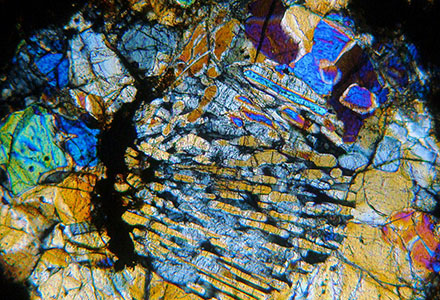| |

Index to Resources

Meteorites
of
North Carolina
|
Spring 2014 Calendar
Subject to change as a result of breaking meteoritic events, conference papers, journal articles, field and laboratory opportunities and the interrelatedness of topics.
Grading is based on demonstrated engagement with and mastery of the material. Weekly challenges are based upon presentations, readings and research
and will include simulations, laboratory work and classroom presentations.
|

Asteroid 113355 "Gessler"
(image is of Ida)

Chelyabinsk Fireball
2/15/2013
|
| |
|
|
| |
Tentative Weekly Topics |
Related Images |
|
Week 1
|
January 15
INTRODUCTIONS
Who are we? Why are we here? What do we wish to accomplish?
Meteoroids, meteors and meteorites.
Though all I knew of the rote universe were those Pleiades loosed in December
I promised you I‘d set them to verse so I'd always remember
That the meteoroid is a source of the light
And the meteor's just what we see
And the meteorite is a stone that's devoid of the fire that propelled it to thee
And the meteoroid’s just what causes the light
And the meteor's how it's perceived
And the meteorite’s a bone thrown from the void that lies quiet in offering to thee
"Corrected" from Joanna Newsom’s, “Emily” (2006)
Falls and finds.
Classification and origin.
Chelyabinsk. The world’s best documented fall. It’s scientific and cultural impact. The best videos and current research on “ice carrots” and the recovery of the main mass.
Recognizing a meteorite. A hands-on examination of a variety of specimens.
In-class and take-home exercise: Look them up on the Internet. What is their significance? Take notes on the distinctive characteristics of each of the specimens displayed. Fusion crust, metal content, etc.
For next week:
Begin your research with the Meteoritical Bulletin Database and then expand it with searches on eBay and the Internet. Look not only for scientific information but cultural information such as history, politics andavailability and price in the marketplace.
a) Meteorites of North Carolina. A history of the 29 reported specimens.
Why have no meteorites been reported in NC for 80 years? Suppose that we want to be the first to report a meteorite from North Carolina in almost a century. Sign up for one of the 29 NC meteorites. Research it and collect ALL the historic and current references and photos you can find. If there is next to nothing known about it, report on another nearby meteorite in Virginia or South Carolina. How would you go about finding additional fragments of that meteorite? Be specific. How would you go about finding a new meteorite that is not related to any of the previously known meteorites? Be specific.
b) Six meteorites from our collection. Pick any six different meteorites from those that were on exhibit in our first meeting. Write a short synopsis of each of them to include relevant scientific and cultural information.
Turn all this information (images, .docs, .txts, .pdfs, etc.) in on a CD-ROM or DVD-ROM disk in a protective envelope, not a plastic jewel-case.
|
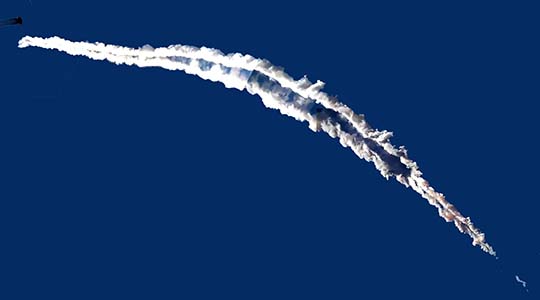
|
|
Week
2
|
January 22
Any voluteers for Raleigh Museum of Natural History "Astronomy Days" weekend? Click here for the schedule.
Saturday, Jan 25, 9am-5pm, load-in at 7:30, leave Duke @ 6:15 a.m.
Sunday, Jan 26, noon-5pm, load-out @ 5:30, arrive Duke @ circa 7:00 p.m.
I give a talk on Saturday at 10:30 entitled "How to Identify and Find a Meteorite" in the 3rd floor "Windows on the World" room. Come one day or both. Help set up and break down, talk to the visitors, take candid video and visit the other exhibitts. Check in at the loading dock located at 100 N. Salisbury Street. If you enter the front doors the check in loading area is at the left rear. We especially need a good cinematographer.
Meteorites of North Carolina. Referencing the Meteoritical Bulletin Database and beyond. Your detailed presentations on each of the 29 known meteorites from this state. Tell us about the history of each meteorite, its analysis, where samples are located, what the market is and what our chances are of finding any more of it, given what you know about its history and the current uses of the land.
~~~~~ break ~~~~~
Chelyabinsk. The cultural / scientific significance of the event (2/15/2013).
The end of the story first: Euronews, recovering the main mass from Lake Chebarkul (2 min)."Russian Meteor Strike, 2013," a report from the Science Channel (47 min).
For Next Week. The cultural/scientific significance of the recent "Sutters’ Mill" meteor. Sutter's Mill began the California gold rush, a fever that was rekindled anew by this event on April 22, 2012. How did that coincidence shape the news and popular media coverage, the search methods and technologies by JPL, dealers, locals and collectors, the politics, market, conflicts and the legislation that ensued, the classification and scientific significance of the meteorite and its disposition.
Consult the "Meteorite-List" archives published by Meteorite Central as well as eBay and the many other sources on the Internet. One of the many...
|
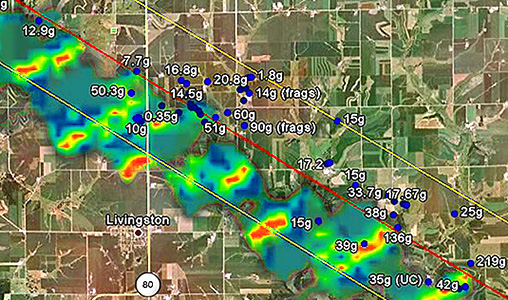
|
Week
3
|
January 29
CLASSES CANCELLED! Due to the severe weather, classes for today have been cancelled. Please check this calendar on Thursdaym, January 30th, for the work in lieu of today's meeting and assignments due next week.
Holes in the Snow? I am reminded of the search for meteorites in Chelyabinsk which entailed looking for small holes in the snow. That strategy might work well for us on days like this. However, they knew that stones had fallen; we only know that they might have.
Astronomy Days: There were 10,161 visitors to the NC Museum of Natural Sciences over the weekend and many of them visited our exhibit tables where they were engaged in discussions by Emily Morino, Jason Lee, Yuchen Long, Kristin Cole and Charlie Thomson (photos here).
Who Owns Meteorites? Laws and regulations vary in different countries and jurisdictions. In the U.S., despite a number of court cases which were abandoned before the issues were entirely settled, the issue has never been fully resolved. We inherit portions of British Common law which holds that "everything that has acceeded to the land remains the property of the land owner." If another party enters that land legally, and finds something that has not acceeded to the land, it is the property of the other party. The question arises, "have meteorites acceeded to the land?" In he case of the Old Woman meteorite, the finders, miners, staked a mining claim on the iron, but it was not recognized in court because claims were only valid on ores, and the iron was not an ore. Whether a placer claim would have been upheld is unknown, but the forgoing would imply that the iron had not acceeded to the land. The Smithsonian has always held that anything found on Fureau of Land Management (BLM) land belonged to them, "in the name of the people of the U.S." One court was decided in favor of the owners of a city park (under pressure of the Smithsonian) on which children had found a freshly fallen meteorite. However, the City, having won, turned title over to the children. Some arguments on "accession to the land" are on our SAKAI resources. Publicity brough on by the "meteorite rush" following the Sutter's Mill fall caused the BLM to issue these regulations. The park at Sutter's Mill invited everyone to come and hunt. In contrast, the Forestry Service.
Recognizing Meteorites. Recognizing meteorites from meteor-wrongs. The two main classificatory systems, the traditional (i.e. stony, stony-iron, iron) versus the genetic (i.e. undifferentiated and differentiated). Primary and secondary characteristics of rocks arriving from outer space: flight marks due to firey entry (e.g. fusion crust, regmaglypts, orientation). Evidence of shock (e.g. impact melts and shearing, slickensides and shatter cones). How undifferentiated meteorites are altered by heat and/or water. How all meteorites weather after arriving on Earth. The Moroccan dealers can separate meteorites worth $0.20 per gram from those worth $1000.00 per gram by eye reasonably well without the aid of sophisticated scientific equipment. The Tucson meteorite convention and market begins this weekend. Rummaging through several tons of meteorites from the deserts of Northwest Africa, could you distinguish those that are the most significant from those that are the least?
Over the Weekend.
On SAKAI, please read and study Alan Rubin's SECRETS... and WHAT HEATED...
In our textbook, please read and study the sections dealing with the STONY UNDIFFERENTIATED & DIFFERENTIATED meteorites, their origin, their classification, and their identification (primarily pp. 88-133 but scattered through out other pages as well). Study up on how to recognize meteor-rights from meteor-wrongs. I will bring in as many rocks as there are participants in our class and ask you to characterize them in terms of those features described above in "Recognizing Meteorites" and to identify them as to type, equilibration, shock and weathering to the best of your abilities. Use the Meteoritical Bulletin Database for descriptions and images of whole rocks and thin sections, search eBay and search the Web to test your skills. On our "Meteoritics References" link, consult the relevant summary charts. And/or consult the other "recommended" texts for this course. Unfortunately, the book we've all been waiting for has yet to appear, so we will have to assemble our own data.
|
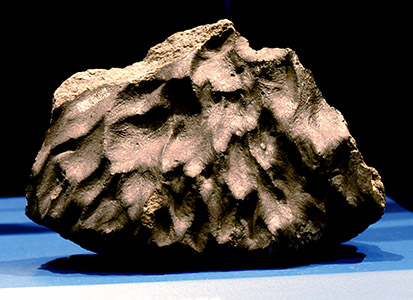
|
| |
|
Week
4
|
February 5
Meteoriten / Meteorites. Read the ENTIRE test to familiarize yourself with the scope of meteoritics, from the intellectual and cultural history of this pursuit to its scientific (and aesthetic) value. We will assign various sections at various times for a close-reading, which you can use as a guide to more detailed papers on SAKAI and on the Web.
In-Class Hands-On Exercise. We will circulate 25 hand specimens in class. Look closely at each of them. Characterize each of them in terms of its classification, flight markings, shock and weathering, composition, significance and other distinctive features?
Undifferentiated (stoney) Meteorites. The chondrites, their recognition and how and what they tell us about the earliest condensed matter in our Solar System and asteroids. Chondrules, and their characterization. A history in a once-molten droplet of frozen minerals.
Differentiated (stoney, stoney-iron and iron) Meteorites. The achondrites, their recognition and how and what they tell us about asteroid, planet and planetoid formation. The primitive achondrites, Widmanstatten figures and crystallization rates of iron and nickle.
At Tucson last year, a French inquiry into the meteorite market. A candid and unedited interview with two of the leading meteorite dealers, Bob Haag and Mike Farmer (15 min).
Over the Weekend.
Please prepare a critical review of
Alan Rubin's SECRETS... and WHAT HEATED... (on SAKAI) to turn in February 12th (3-6 pages, on paper, double-spaced.) Read up on iron and stony-iron meteorites in our textbook and from other sources you might find, including the Web. We will have the same in-class hands-on excercise that we did for stonys, but this time on irons and stony irons on February 12th.
|
|
Week
5
|
February 12
In-Class Hands-On Exercise. We will circulate 12 hand specimens of irons and stoney irons in class. Look closely at each of them. Describe in detail what you see in each etched slab. What are the different sorts of patterns, inclusions and clasts (chunks of stuff) that you see? Locate them on the photographs which accompany each section. Characterize each of them in terms of its classification, composition, significance and other distinctive features.
Over the Weekend.
In our textbook, read the sections on impact craters and impact debris.
On the Web, read the monograph "Traces of
Catastrophe
A Handbook of Shock-Metamorphic Effects in
Terrestrial Meteorite Impact Structures," by
Bevan M. French. You don't need to read it in excrutiating detail, but at familiarize your self with it enough to know what evidence is relevant as evidence of impacts and impactites.
Please prepare extensive notes on how you would distinguish between a volcanic crater and a meteorite crater on Earth. Please be specific. Imagine that you will be going into the field to investigate something you saw on Google Earth. What can you tell from the aerial (or satellite) photography? What would you look for on the ground? What samples would you retreive and what would you do with them in the lab on your return?
OK: Prepare the above with reference to a real crater in Nevada. Locate it with Google Earth. Is it meteoritic or volcanic? Why? What would you need to do to be sure?
Paste these Nevada coordinates into Google Earth search:
37°55'14.74"N 115° 9'28.94"W
Back away to an eye altitude of about 26,000 feet.
There is a greenish circle about 1 mile in diameter surrounded by land forming other larger circles.
Provide me with a reasoned research plan of 3-4 pages, double spaced on paper.
|
|
Week 6
|
February 19
In-Class Hands-On Exercise. We will a variety of rocks exhibiting evidence of meteorite impacts. Since they say, "You don't truely see an object clearly until draw it," I'll ask you to draw and describe the patterns, inclusions and clasts (chunks of stuff) that you see. I'll provide the paper. You provide the detailed observations. Characterize each of them as best you can in terms of its classification, composition, significance regarding impacts and other distinctive features.
Over the Weekend.
Reserve one crater (only one per person) from the craters in METEORITEN / METEORITES or from the EARTH IMPACT DATABASE. In our textbook, re-read the section on impact features as well as the relevant parts of French's book. Go to our password protected pages under "Impacts Effects." There you will find an example of creating an anaglypt stereo image of "last weekend's crater" from the views on Google Earth. (I will go over this procedure in class.) Follow that same procedure with the crater that you reserved and turn in the images requested on a disk.
|
|
Week
7
|
February 26
A Review of the In-Class Hands-On Exercises on Stony and Iron Meteorites.
We will look again at the extraterrestrial rocks circulated in class and their traditional as well as genetic classificatory schemes as illustrated in our "references" pages.
For Next Week:
A) Please read John Wasson's, "Why HED Meteorites are Probably Not from Vesta" in our SAKAI "resources." Provide a 2-3 page,summary and critique of his arguments, double spaced, on paper.
B) Also, pick a crater from the Earth Impact Database, note its size and take note of any photographs. Find the crater on GoogleEarth, zoom in to capture the crater and its surroundings and grab two images of it, one at the left side of the screen and one at the right side. Make sure that "tilt" is reset to "none," that North is still precisely pointing "up," that you have moved the image to the left and right without moving it even the slightest degree up or down (use the arrow keys). Crop those images in PhotoShop, adjust their "levels" for good contrast, copy the Red Channel of the left-eye image (that was on the right edge of the screen) to the Red Channel of the right-image (that was on the left edge of the screen). You now have a color anaglyphic stereo image of the crater. With red/cyan glasses take note of the cross-section of the crater and the diagnostic features that distinguish it from a volcanic crater.
Images to the right are:
Upheaval Dome by Emily Marino.
Upheaval Dome by Lauren Carroll.
Mars Ejecta Blanket by Mars Odyeesy Mission THEMIS. |
|
Week
8
|
March 5
Solar System resonances. How the influence of multiple massive objects affects their orbits. Modeling the resonances of moons, Kirkwood Gaps, Trojan asteroids and ring structures. Hands-on experimentation with a complex systems multiagent model.
Panspermia and “swapping rocks.” Modeling the paths of asteroids and debris freed from parent bodies by collisions take to reach the Earth and other planets. Hands-on experimentation with a complex systems multiagent model. |
|
| |
March 12 / SPRING BREAK
|
Week
9
|
March 19
Solar System resonances. How the influence of multiple massive objects affects their orbits. Modeling the resonances of moons, Kirkwood Gaps, Trojan asteroids and ring structures. Hands-on experimentation with a complex systems multiagent model.
Flocking 32. The simulation, "flocking32.exe" is located here. Open the file you saved and track each of the 300 asteroid (agent) orbits. Most will be off screen or within the orbit of Mars. If there are some unusual orbits between Mars and Jupiter please "screen grab" them noting their "tag" (identification number). Do a screen grab for each of the moons captured by Jupiter noting each one's tag. If you capture any moons of Mars or any Trojans document them as well. An example of documenting moons is shown in the second image down. An example of how you might analyze the data you have gathered is here (orbits.doc). Remember, this is an exploratory experiment. We don't know what you will see.
Panspermia and “swapping rocks.” Modeling the paths of asteroids and debris freed from parent bodies by collisions take to reach the Earth and other planets. Hands-on experimentation with a complex systems multiagent model.
"Swapping rocks: The transfer of ejecta between the planets.” VHS (72m). |
|
Week
10
|
March 26
Microprobe Demonstration.
Nick Foster, from the Southeastern North Carolina Regional Microanalytic and Imaging Consortium, is sheduled to talk to us about and demonstrate the microprobe pictured to the right. Since it can be operated remotely from our classroom, we will have a chance to take a closer look at the chondrite containing the dark inclusion that we looked at in class. Alan Boudreau, here at Duke, also has a microprobe tht we can use but there is no way for all of us to crowd around it.
|
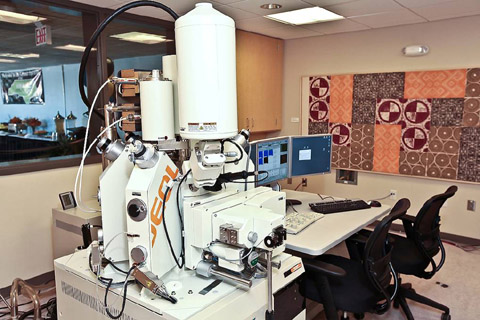 x
xxxxxxxNick Foster's Microprobe at SNC-MIC x
xxxxxxxNick Foster's Microprobe at SNC-MIC |
Week
11
|
April 2
Participant presentations.
Jordan Gulli: Panspermia
Eric Stach: Meteorite Hunting
Jamal Wallace: Vredefort Impact Structure
In-Class and Take-Home feedback assignment:
Take notes and provide the following feedback to each of the presenters:
- What points in the presentation were unclear?
- Based upon the research presented, what open questions remain?
- How might the presenters have improved their presentations?
- Would the topic be important to include in next year's class?
Please answer these questions in a separate paragraph for each presentation. You can discuss more than one presentation on a page, but don't let any discussion of a presentation continue on a second page. I will record these and return your comments to each of the presenters. On paper please...
For Next Wednesday:
Using the "flocking34" simulation, at what speeds must we launch an asteroid to perfectly match the orbits of Mars and Jupiter? Use the "Single Sun" rule and the "Launch Radius" and "Tracking" features. A simple question. Please turn in your answers on a single sheet of paper.
* If you helped out at the Raleigh Natural Sciences Museum, you may omit the presentation requirement. However, I would encourage you to present anyway to add a "plus" to your course work.
Meteorite mineralogy and petrology lab. Please arrange to come by the Complex Systems Lab in Bay 11 in Duke's Smith (Tobacco) Warehouse for approximately one hour of lab work on April 8, 9, 10, 15, 16 or 17 between 1:30 and 4:00 p.m. This may consist of examining thin sections under the polarizing optical microscope and/or windowing, cutting and preparing meteorites. We can accommodate up to six students at a time. |

|
Week
12
|
April 9
Participant presentations.
Alexa Levy:
Carl Heinz: Meteor Showers
Ian Rock:
Justin Summerville:
Ryan Harding:
Jack Parker: Panspermia
Matt White:
* If you helped out at the Raleigh Natural Sciences Museum, you may omit the presentation requirement. However, I would encourage you to present anyway to add a "plus" to your course work.
Meteorite mineralogy and petrology lab. Please arrange to come by the Complex Systems Lab in Bay 11 in Duke's Smith (Tobacco) Warehouse for approximately one hour of lab work on April 8, 9, 10, 15, 16 or 17 between 1:30 and 4:00 p.m. This may consist of examining thin sections under the polarizing optical microscope and/or windowing, cutting and preparing meteorites. We can accommodate up to six students at a time.
|
|
Week
13
|
April 16
Participant presentations.
Hayley Johnson:
Mike Redlicki:
Josh Levine: Alamo Impact Breccia
Lauren Carroll:
Drew Masters:
Yuchen Long:
Alvin Kang:
* If you helped out at the Raleigh Natural Sciences Museum, you may omit the presentation requirement. However, I would encourage you to present anyway to add a "plus" to your course work.
Meteorite mineralogy and petrology lab. Please arrange to come by the Complex Systems Lab in Bay 11 in Duke's Smith (Tobacco) Warehouse for approximately one hour of lab work on April 8, 9, 10, 15, 16 or 17 between 1:30 and 4:00 p.m. This may consist of examining thin sections under the polarizing optical microscope and/or windowing, cutting and preparing meteorites. We can accommodate up to six students at a time.
|
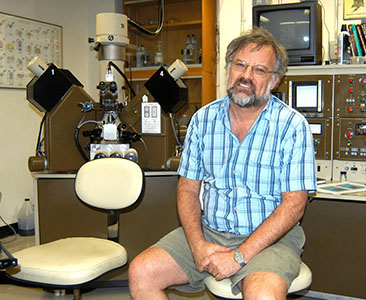 Alan Boudreau at Duke's facility.
Alan Boudreau at Duke's facility. |
Week
14
|
April 23
Participant presentations.
Phoenica Zhang:
Ian Zhang:
Gihan Hewage: Elemental Analysis / Astrochemistry
DJ McCall:
Last Day: Refreshments...
* If you helped out at the Raleigh Natural Sciences Museum, you may omit the presentation requirement. However, I would encourage you to present anyway to add a "plus" to your course work.
|
|
| |
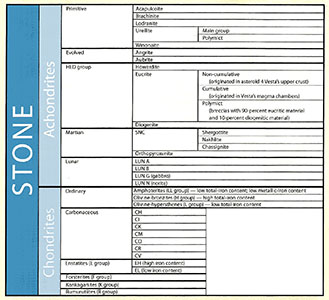 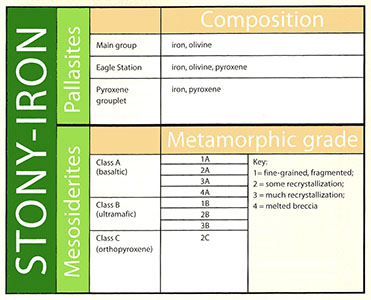 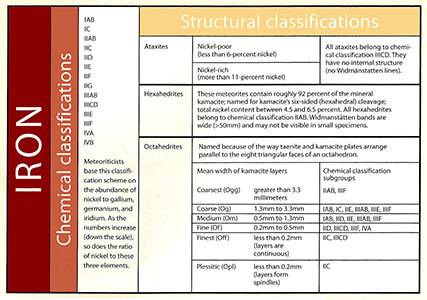
|
| |
!!! No Final / Have a Great Summer / Find Lots of Meteorites !!! |
|







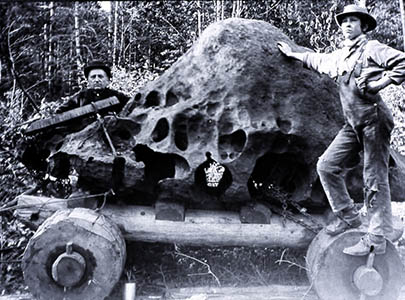
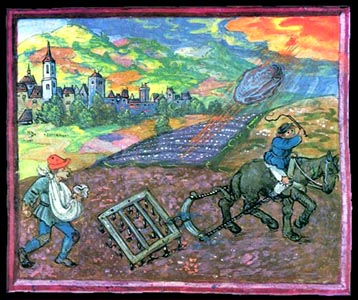



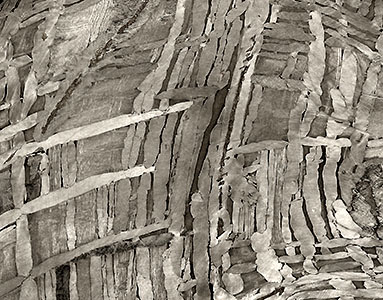



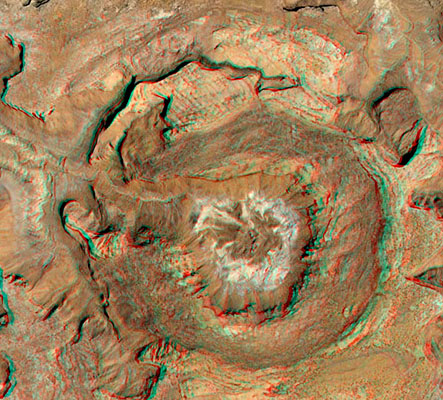


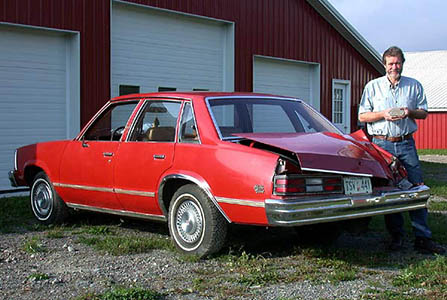


 x
x
